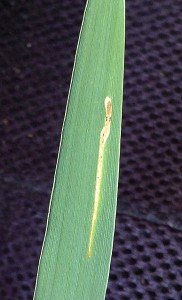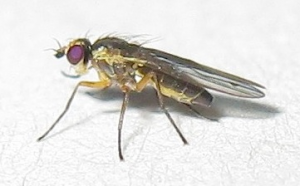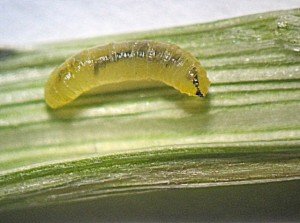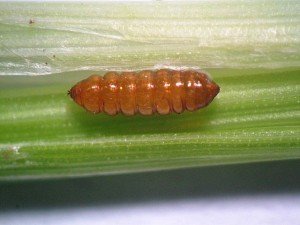Leaf mining caused by Agromyzid flies has recently been reported in wheat crops in the Goondiwindi/ Toobeah (late August) and Quirindi (late September) regions. Consultants reported their initial impression was that the damage symptoms, pale stripes on the leaves, resembled old stripe rust infections. However on closer inspection, the leaves were actually a windowed with frass visible inside the translucent damaged leaf tissue. When cut open, many of the ‘mines’ had small (1 to 1.5 mm) fly larvae chewing away. Small fly pupae (2 mm) were also found inside the damaged leaves.
The leaf mining flies detected are in the Agromyzid group, which includes other pest species such as bean fly and soybean stemfly (which don’t attack cereals). At this stage, the species responsible has not been determined. DAFF entomologists are currently trying to rear adult flies from larvae in damage samples as adults are much easier to speciate than larvae. However it is most likely a native Agromyzid species, quite possibly Cerodontha australis. This is a common species which also feeds on pasture, and which is usually kept in check by native wasp parasites in paddocks not sprayed with disruptive insecticides. Note that Agromyzid parasites were detected in the Quirindi samples.
There are no thresholds for Agromyzids in cereals, but major outbreaks are uncommon, and the pest is most damaging in seedling crops. Reports from Goondiwindi and Quirindi suggest the affected crops have grown out of the damage (no mines on new leaves) and that pesticide control was not necessary.
DAFF entomologists, working on a GRDC-funded project, are keen to document the extent of the current outbreak and to confirm the species. Accordingly if you have a suspected outbreak, please contact Hugh Brier (0428 188 069), [email protected].




